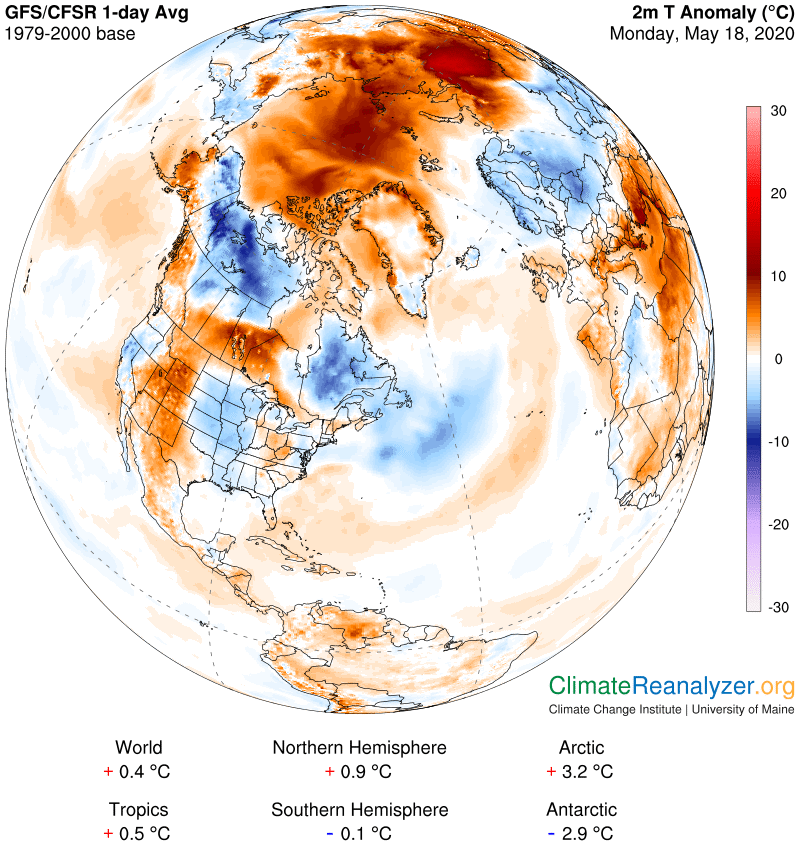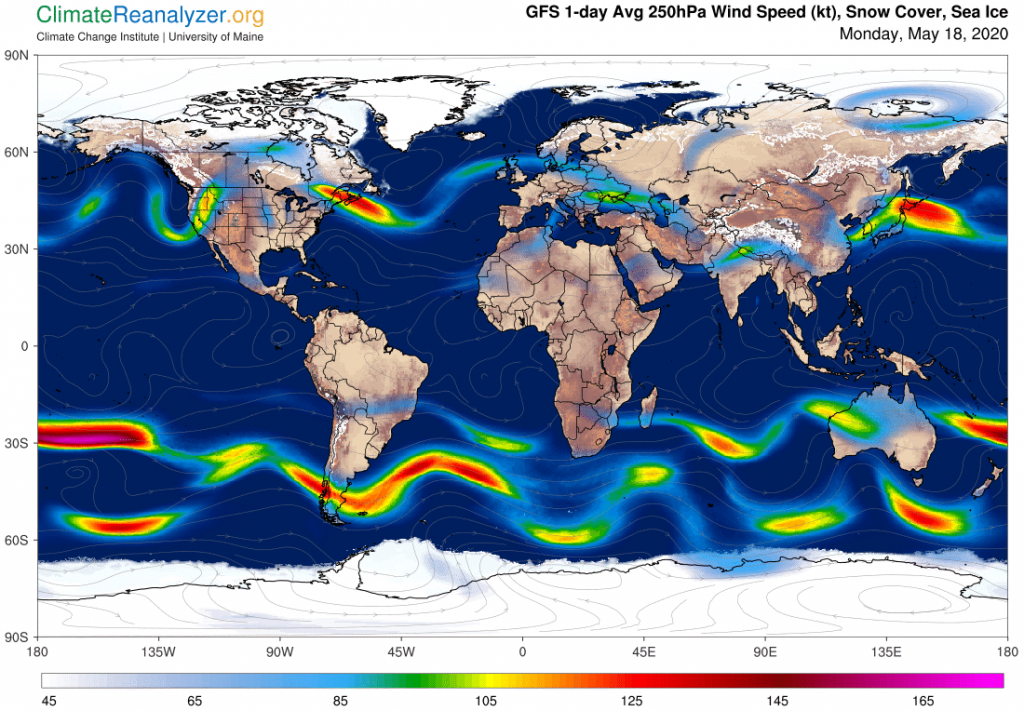The animated version of precipitable water streams is well worth a good look right now, and for at least a few more days. Go ahead and open the link at http://tropic.ssec.wisc.edu/real-time/mtpw2/product.php. We want to make a comparison of current overall activity in the northern and southern hemispheres, which at the moment is quite extreme aside from the regularity observed in the tropical zone. That is, when you compare 0-30N with 0-30S there is hardly any difference at all in movement or magnitude, except that the very heaviest readings, mostly moving west at low alitude, are more intense on the north side of the equator—completely normal at this time of year. When you compare 30-60N to 30-60S there is still not much difference until you get past the half-way points at 45 or so, after which the shading begins to clearly become more intense in the north, with average weights about 10 kg (or mm) higher. That much difference is far more than just a seasonal thing.
Then compare the two hemispheres at latitudes 60-90, where you may need to get up close to the screen to accurately see how intense the activity is in the north, as opposed to how faint in the south. Much of Antarctica is actually being stuck tight with readings under 1kg while the Arctic polar region is caught up in wave after wave of readings that in many cases are all the way up to 10—double the seasonal norm, and even higher in spots. That’s why we are having anomalies that look like the one below and are lingering in place for days on end. (Also, take note of the baseline average, going back only three decades, and the different numbers below the image, where the global average for this one day turned out to be relatively cool in spite of the Arctic warming. The hemispheric divergences could not be much greater.)

Last week we saw how this frenzied airwater movement in the high north could probably be best explained as a consequence of the way the normal high-altitude air pressure pattern had just recently changed, causing a breakup in the winds that normally circle the pole in single continuous pathway loops. These winds include the parents of those intermittent high-speed bursts we call jets, the most powerful of which can streak continuously over distances of greater than 1000 miles at speeds greater than 100 kph, or 60 mph. (The fastest speed ever recorded was 231 mph, in 2019.) Being intermittent by nature, all the principal jetstream pathways have many stretches where winds blow at lower speeds, down to 25 mph and sometimes less. This next chart from today will give you an excellent idea of how much difference there can be in the strength of jetstream winds when conditions that affect one set are at their best and the other at their poorest:

I believe all the weakness that shows up in the NH jets can be attributed to the breakdown in the relevant air pressure pattern, as discussed here last week. The change forced all of the interior wind pathways, including those that bear jetstreams, into small independent units that no longer circle the pole in a continuous way. The outermost jetstream pathway, closer to the tropical region, remains intact but has been left with weaker jets and a more irregular shape. Jetstream pathways in the interior, now much more plentiful in number but individually of much reduced circumference and scattered off center after the dismemberment, bear dwarfish jets that are considerably shorter and weaker than usual. As a consequence, aging streams of airborne water find it much easier to slip through and progress into areas where so much of this kind of activity is normally forbidden.
Carl